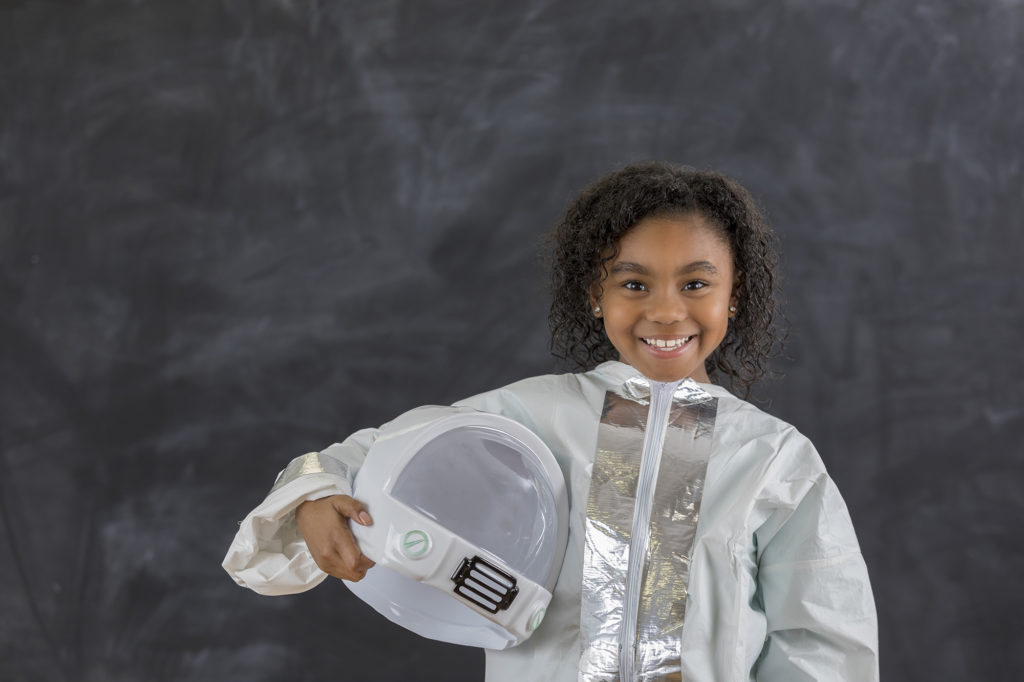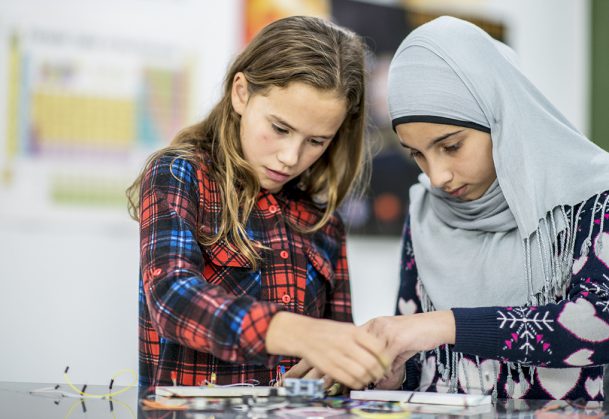Encouraging Girls to Roleplay as Successful Female Scientists Could Help Close the Gender Gap in STEM

Make-believe doesn’t usually have a place in laboratory settings, but research just published in Psychological Science suggests that girls may persist longer in science activities when they pretend to be successful female scientists. This kind of play-based intervention could help close the gender gap in science, technology, engineering, and math (STEM) fields by boosting girls’ early engagement with science, according to Reut Shachnai (Yale University), Tamar Kushnir (Duke University), and Lin Bian (The University of Chicago).
“Children as early as age 6 start to think boys are smarter and better at science than girls,” Bian said. These gender stereotypes steer girls away from science activities, contributing to gender gaps in STEM. “Our work aimed to promote girls’ engagement in science to counter the disparities.”
Shachnai, Kushnir, and Bian investigated the value of using pretend play to embody a role model through a study of 240 4- to 7-year-old American children. Each child was assigned to one of three conditions. In the baseline group, children simply played a science game with a researcher by predicting whether an object would sink or float when placed in water. In the exposure group, children learned about a gender-matched scientist they were unlikely to have heard of—Marie Curie for girls and Isaac Newton for boys—before completing the activity, whereas children in the roleplay group were asked to play the game as the scientist role model. To help heighten their immersion, the researchers referred to children in the roleplay condition as Dr. Marie or Dr. Isaac instead of their real names.
After each round of the game, children chose whether they wanted to play again or do something else. Boys were highly motivated across conditions, completing an average of 14 rounds of the game without any intervention. Girls in the baseline condition, on the other hand, completed just five rounds of the game when playing as themselves. This increased to an average of nine rounds after hearing about a female scientist role model and to 12 rounds when they pretended to be that scientist.
“Our study is the first to show that pretending to be a woman role model, rather than merely hearing about her, can help close early-emerging STEM gender gaps,” Bian and Shachnai explained.
Pretend play may help increase girls’ persistence in science activities by psychologically distancing them from negative gender stereotypes about their STEM abilities, Shachnai suggested. Bian added that highlighting someone as a role model can backfire if children perceive the role model as being very different from them, which may cause their success to seem even more unattainable. The role-model strategy may have been effective in this case, however, because most girls didn’t know anything about Marie Curie’s appearance or background, allowing them to fully embody the role.
“Our findings suggest that we may want to take representation one step further,” Shachnai said. “Rather than merely hearing about role models, children may benefit from actively performing the type of actions they see role models perform. In other words, taking a few steps in the role model’s shoes, instead of merely observing her walk.”
This could be done by offering pretend-play activities involving role models in early educational settings like museums and schools, she said.
Future work could help clarify the mechanisms through which pretend play boosts persistence, Shachnai continued. Given that most of the children in this study were white, it will also be important to explore whether pretend play is equally effective for children of color, Bian said, as well as whether children can benefit from pretending to be a role model whose gender or race is different from their own.
Feedback on this article? Email [email protected] or login to comment.
Reference
Shachnai, R., Kushnir, T., & Bian, L. (published online September 28, 2022). Walking in her shoes: Pretending to be a woman role model increases young girls’ persistence in science. Psychological Science. https://doi.org/10.1177/09567976221119393
You might also enjoy
-

Girls Are More Engaged When They’re ‘Doing Science’ Rather Than ‘Being Scientists’
A psychological study suggests a way to keep gender stereotypes from discouraging girls’ persistence in science activities.
-

To Boost STEM Graduation Rates, Focus on What You Can Control
Interventions that encourage students to attribute academic failure to controllable factors could help boost graduation rates.
-

Storybooks Could Be an Early Source of Gender Stereotypes for Children
Reading to children offers many benefits. A new study reveals, however, that popular storybooks are an underrecognized source of gender stereotypes, and children’s books often contain stronger gender biases than texts for adults.





APS regularly opens certain online articles for discussion on our website. Effective February 2021, you must be a logged-in APS member to post comments. By posting a comment, you agree to our Community Guidelines and the display of your profile information, including your name and affiliation. Any opinions, findings, conclusions, or recommendations present in article comments are those of the writers and do not necessarily reflect the views of APS or the article’s author. For more information, please see our Community Guidelines.
Please login with your APS account to comment.